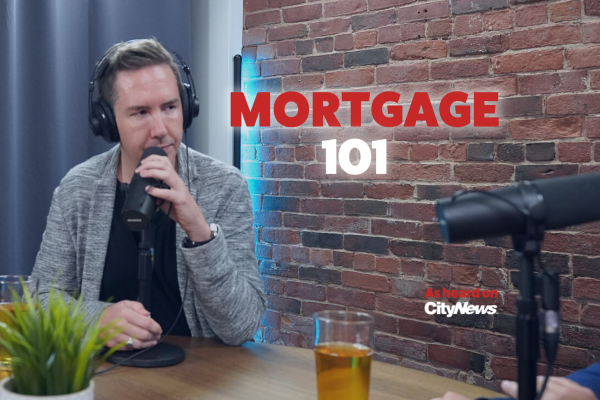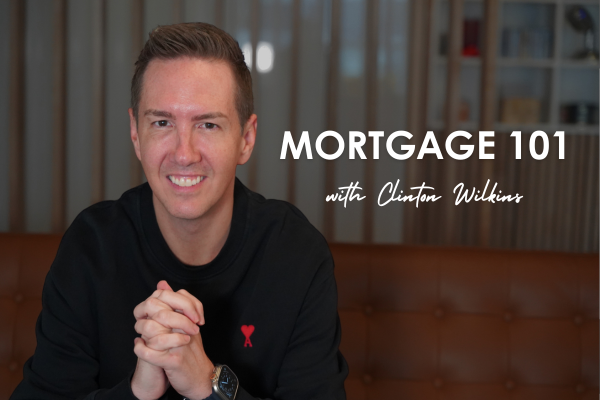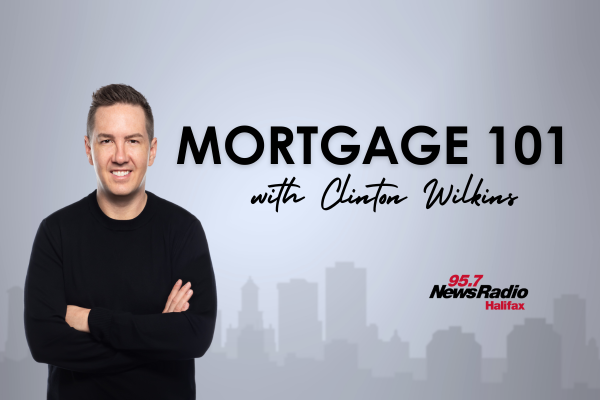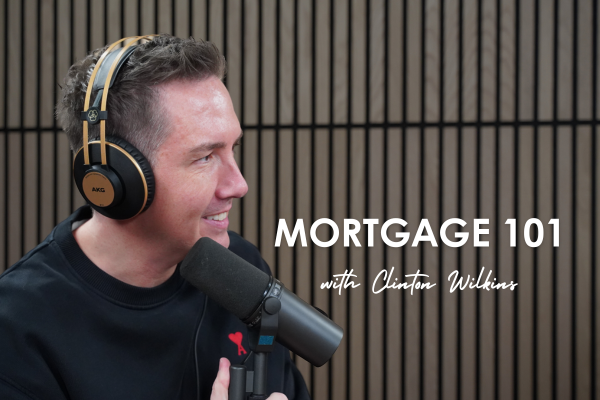Todd Veinotte and Clinton Wilkins discuss the evolving landscape of mortgage lending, highlighting its complexities and the importance of staying informed.

Mortgage 101 – Mastering Mortgages In A Housing Crisis
How can homeowners pay down their mortgages effectively during a housing crisis? Clinton Wilkins and Todd Veinotte discuss the impact of variable rates, the risk of negative amortization, static payments, potential variable rate increases, and the advantages of adjustable payments. They also explore the pressing need for diverse housing in Halifax.
Todd Veinotte 00:00
While we were discussing a situation that you were on my talk show, a week or so ago, it was alarming when I read the headline and the story. And I said, I need Clinton Wilkins to offer some clarity. So instead of me describing what the story was all about, I’ll defer to you, the expert.
Variable rate mortgages have led to negative amortization
Clinton Wilkins 00:19
Sounds great. So there are some lenders in Canada, primarily bank lenders, brick and mortar lenders that have a variable rate mortgage, which have a static payment. And what’s been happening is, as the interest rates have gone up with the Bank of Canada, the amount of principal and interest payment has not been covering any any principal. Basically, the amount of the payment has not even been covering the interest, which means the amortization has been negative and every month that goes by these borrowers owe more than they did the previous month, and that’s considered a negative amortization. Obviously, it’s a negative situation for a borrower and a negative situation for the lender, their risk level basically has increased every single month. And the federal government is not cool with this. They don’t like it. They want borrowers to make sure that their payments are at least covering the interest. And they are proposing or actioning, or putting, you know, legislation into place that these amortizations cannot exceed 40 years. So when a payment would get to an amortization of 40 years, it would then trigger and the payment would need to go up to go back to the original amortization. Not every lender has an adjustable payment. By in large, most of the lenders that we deal with, that have a variable rate mortgage have an adjustable payment. So our clients are not that concerned with this.
Todd Veinotte 01:43
Do you have anybody in this situation?
Clinton Wilkins 01:44
We certainly do. And my personal mortgage has a static payment and I’m in a variable.
Static payments in a rising rate environment
Todd Veinotte 01:48
So the advantage of the static payment is, is what?
Clinton Wilkins 01:52
Your payment stays the same, but you have to self manage, you have to do a payment increase, you’re have to do a lump sum payment to make sure you’re keeping your amortization in line.
Todd Veinotte 02:00
So what type of client would be ideal? Somebody who has extra income or savings?
Clinton Wilkins 02:05
People that have extra savings that could do a lump sum payment, and static payment works out great. In a rising rate environment, clients do not want a static payment, they wished that their payment would have increased and kept their amortization in line. By in large, Canadians want to pay down their mortgage, this type of mortgage, it’s great, because you know what your payment is, but not great if you really want to pay your mortgage down, especially in an increasing rate environment.
Todd Veinotte 02:29
So we’ve heard something like amortizations crazy numbers based on this.
Unexpected mortgage payment increases for borrowers with variable rates
Clinton Wilkins 02:34
100 year amortization. Amortizations that are basically infinity because the payment isn’t covering at least like $1 worth a principle. The amortization is negative.
Todd Veinotte 02:44
But that’s not going to play out. Or is it?
Clinton Wilkins 02:49
It will until these mortgages come up for renewal, and these borrowers are gonna get a real surprise. They’re gonna get a real surprise, because then their lender is going to want to bring their amortization back in line, Todd. So what happens if you go from amortization of infinity and have to go down to 20 years? You are going to get a wake up call.
Todd Veinotte 03:07
1000 more a month potentially?
Clinton Wilkins 03:09
Who knows, it depends on how much you owe. It depends on where the rates are at that time. Not every lender acts like this, though. Not every lender does. So I think that’s where you really need to understand the type of mortgage that you have. And I have these conversations with borrowers, because some lenders that do have a static payment, will let it go up until the payment is not covering just the interest. Then they’ll say, okay, we gotta reset, or you have to do a payment increase. Other lenders have a trigger rate, if the rate gets to this point, then the payment is going up. And it’s really a conversation that a lot of these lenders are having with borrowers. But some borrowers are just in a situation where they don’t want to increase their payment, or they can’t make a lump sum payment, but that’s not sustainable. Especially when it comes up for renewal. That’s when these borrowers are going to get a wake up call. I know in our last segment, we really talked about these fixed rates, and I’m so concerned and it keeps me up at night, borrowers that have these very low fixed rates that are coming up for renewal, because they’re getting a big wake up call. But these variable rate clients that are in a static payment, if they’ve not hit the trigger, or you know, what their lender will never trigger it is really very concerning.
Todd Veinotte 04:15
Okay, so is this a gap perhaps in lending rules? Should this have been allowed?
Variable rates with adjustable payments facilitate mortgage repayment for borrowers
Clinton Wilkins 04:20
I think that it is a gap. I think if you have a mortgage, and you’re making a principal and interest payment, in my personal opinion, your amortization should never get longer than the amortization you took out originally. That’s just my opinion. I prefer a variable rate mortgage with an adjustable payment. I prefer that, and I believe it’s safer. I think borrowers, you know, want to pay down their mortgages. I think that their amortization staying in line is a good thing. And, you know, that’s the way that I prefer to have a variable. Not every lender acts like that though it just that that’s the reality. Every lender is a little bit different. And that’s why I think dealing with an unbiased mortgage professional right now Todd is just so important.
Todd Veinotte 05:02
Alright, so let’s let’s go back. I know that we’re talking a lot about interest rates. But why wouldn’t we right?
Clinton Wilkins 05:07
Honestly, it’s a hot topic. It is a crisis.
Todd Veinotte 05:10
That’s right. So we can remember a number of years ago when it was interest rates were at historic lows. You mentioned 1% and Tiff Macklem of the Bank of Canada, they were basically promoting this saying, now’s the time, go borrow money, spend money, spend money. So was that somewhat reckless or irresponsible? Based on what we’re now seeing?
Clinton Wilkins 05:32
I don’t think they had the foresight that inflation was going to –
Todd Veinotte 05:36
No, okay, that’s fine.
Clinton Wilkins 05:37
because inflation was negative at that time basically.
Todd Veinotte 05:39
I get it, that’s fine. But you don’t have the foresight, but you’re supposed to be able to be the person on the watchtower, right? The guy on the on the wall, who’s suppose to, you’ve paid the big money, and you’re supposed to be able to potentially not predict a pandemic. But I just think that a lot of people were sold, I don’t want to say, billable goods but yeah!
Elevated interest rates may gradually decrease if inflation is managed effectively.
Clinton Wilkins 05:59
And Tiff Macklem actually said that the rates were going to be low for a very long time. That did not end up being the case. And myself included, we take all the information that we’re given from the Bank of Canada, from economists, were always gathering information. And, you know, just like when the pandemic first struck, we’re like, oh, this is gonna be two weeks, this is gonna be over, you know what I mean? Like, we’re gonna get back to normal, things are going to continue. And then things just keep dragging on, dragging on, dragging on, and that’s why you have to be able to pivot and you have to be able to change perspective, and you need to fall on your sword sometimes that, you know, the information is changing. And right now, I think the rates are going to be high for some time. I think they’re going to be high in 2024. And then, if inflation comes under control, I think rates are going to start softening, but rates are gonna go down a lot slower than they went up. I guarantee you! That, I will tell you. And I’m not an economist, Todd. You know, you can call me a barstool economist, or whatever. But luckily, I do get called on for the advice and, you know, share my opinion, and this is my opinion. Sometimes opinions are right, sometimes they’re wrong and sometimes these are predictions based on information that I’ve gathered from economists, from lenders and things like that.
Todd Veinotte 07:16
So, I would think that the pre-existing builds would not be as impacted as new construction and new construction is what we really, really need in order to help alleviate the housing crisis, obviously, right?
Diverse housing solutions are required to address the housing crisis in Halifax
Clinton Wilkins 07:30
Yeah, we definitely need a lot more new construction of all types of properties, Todd. So I’m not just talking single family homes, because I think sometimes when we think new construction, we’re thinking like, you know, the McMansions. And we’re thinking like beautiful, you know, big new construction, single family. That’s not what I’m talking about. Yes, we need those but we need all styles of housing. We need townhomes. We need multi-families, condos, apartments, all types of housing right now. On my way here to record, I heard news information on CityNews. Listening to the news, saying that HRM has partnered to put up a bunch of small tiny homes outside of Sackville. So I thought that was very cool. I think they were doing like 50 units or so and these are the things that we need to do. We need to start thinking more outside of the box. And you know, Halifax Regional Municipality certainly has been doing that as well, you know, changing their legislation around, you know, laneway homes, second units in people’s homes and whenever, we need more density on the peninsula. You know, I drove here today along Robie Street, and there’s so many lots ready to go that are ready to get buildings going. I think through these huge you know, big corridors in Halifax, this needs to be all tower, because it’s much easier to have the density in that core, especially around things like transportation and you know, then people can walk and we can build more density in the downtown core.
Todd Veinotte 09:01
Now we don’t need sprawl. More sprawl is not what we need.
Clinton Wilkins 09:03
Sprawl is expensive and sprawl is not good for residents. As much as we sometimes want to protect, you know, the historic and we want to prevent, you know, all these towers, the towers will be good for building more density in the core of Halifax which I am for.
Todd Veinotte 09:19
Indeed. Mortgage 101 your guide to homeownership. We’ll be back.
Clinton Wilkins 09:31
If you’ve liked what you’ve heard, and you want to learn more, feel free to visit us online at teamclinton.ca


